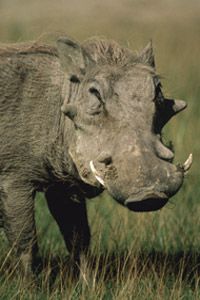
When a group gathered to start hiking the Florida National Scenic Trail in January 2017, a few people fretted about the possibility of running into alligators. A local man told the hikers it wasn't alligators they should worry about. They needed to be concerned about wild hogs.
Wild hogs are an invasive species, and apparently, a growing problem across much of America. The U.S. Department of Agriculture estimates there are more than 6 million feral pigs in the nation today, scattered throughout 39 states. Two of the most overrun are Texas and Florida.
Advertisement
Pigs were first introduced into North America's southeastern tier by Spanish explorers in the 1500s, who brought them along as a food source. Over the ensuing centuries, farmers and hunters have repeatedly released pigs into the wild.
The situation quickly grew out of control because feral hogs are quite fertile. In addition, as an invasive species, they have no natural predators, and they easily adapt to many different environments. And, well, they're pigs — they'll eat just about anything.
So what's the problem with a bunch of swine running around? First, they're very destructive, trampling crops, ruining ecosystems, attacking livestock and threatening native species. They're also a health risk to humans, pets, wildlife and livestock, carrying at least 30 diseases and nearly 40 parasites. In all, wild pigs today cost $1.5 billion annually in damages and control efforts.
One way to address the problem, some joke, is to kill and eat the hogs. Many people do, as they're edible. But most governmental efforts focus on control and eradication. In Texas, wildlife agents shoot them from helicopters. One Louisiana animal scientist hopes to start baiting them with sodium nitrite poison.
If the feral hogs' increasing numbers and northward expansion isn't soon halted, experts say they'll be in most U.S. counties within the next 30 to 50 years, and possibly sooner. In 2016, the U.S. government announced a $20 million program to knock back their numbers. The program goal is to wipe out the pigs from two states every three to five years, and stabilize the damage done by the pigs within a decade.
Advertisement


